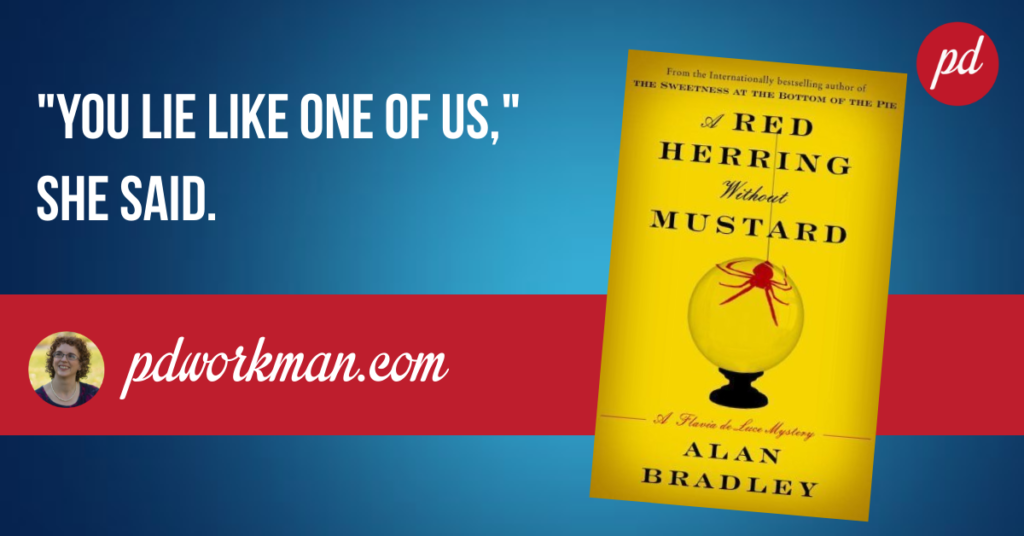What is Back to School without new books? Fill up your virtual backpack with some of my young adult books!
Teaser Tuesdays is a weekly bookish meme. Read the rules and more teasers at The Purple Booker. Anyone can play along.
This week, I am just finishing up A Red Herring without Mustard, book 3 in Alan Bradley’s Flavia de Luce series. I have written about a couple more of the other Flavia de Luce books here before:
The Weed that Strings the Hangman’s Bag
The Dead in their Vaulted Arches
And I’ve read a few others that I haven’t blogged about as well.
Flavia is a rather morbid child (age eleven) with a fascination with chemistry, poisons, bodies, and murder. She is very handy in her chemistry lab and although she often gets in the way of the local constabulary, she is also usually ahead of them in solving murders that take place in the local village (and in this case, even on the de Luce family property.)
I didn’t realize until after I had read a few of books in this series that Alan Bradley is actually Canadian, not a British author. He writes very convincingly of Flavia’s 1950s England, I never would have guessed that he didn’t actually live in the UK.
We had gone about a quarter of a mile when suddenly the Gypsy spoke.
Alan Bradley, A Red Herring Without Mustard
“You lie like one of us,” she said.

In the third installment of this bestselling, award-winning, sister-poisoning, bicycle-riding, murder-investigating, and utterly captivating series, Flavia de Luce must draw upon Gypsy lore and her encyclopaedic knowledge of poisons to prevent a grave miscarriage of justice.
“You frighten me,” the old Gypsy woman says. “Never have I seen my crystal ball so filled with darkness.” So begins eleven-year-old Flavia de Luce’s third adventure through the charming but deceptively dark byways of the village of Bishop’s Lacey. The fortune teller also claims to see a woman who is lost and needs help to get home—and Flavia knows it must be her mother Harriet, who died when Flavia was less than a year old. The Gypsy’s vision opens up old wounds for our precocious yet haunted heroine, and sets her mind racing in search of what it could mean.
When Flavia later goes to visit the Gypsy at her encampment, she certainly doesn’t expect to find the poor old woman lying near death in her caravan, bludgeoned in the wee hours. Was it an act of retribution by those who thought that the woman had abducted a local child years before? Certainly Flavia understands the bliss of settling scores; revenge is a delightful pastime when one has two odious older sisters. But how can she prove this crime is connected to the missing baby? Did it have something to do with the weird sect who met at the river to practice their secret rites?
While still pondering the possibilities, Flavia stumbles upon a corpse—that of a notorious layabout and bully she had only recently caught prowling about Buckshaw. The body hangs from a statue of Poseidon in Flavia’s very own backyard, and our unflappable sleuth knows it’s up to her to figure out the significance. Pedalling her faithful bicycle, Gladys, across the countryside in search of clues to both crimes, Flavia uncovers secrets both long-buried and freshly stowed—the dodgy dealings of a local ironworks, the truth behind the Hobblers’ secret meetings, her own ancestor’s ambitious plans—all the while exhausting the patience of Inspector Hewitt. But it’s not long before the evidence starts falling into place, and Flavia must take drastic action to prevent another violent attack.



